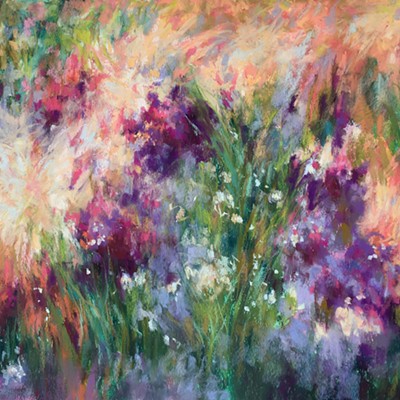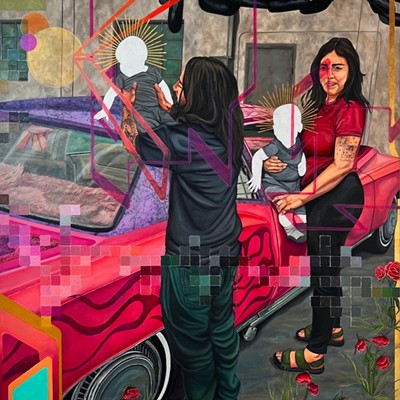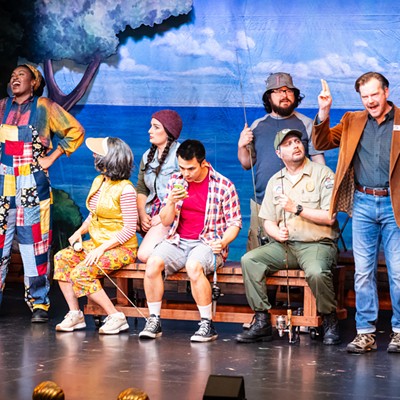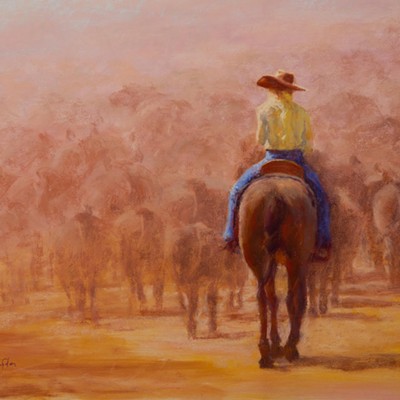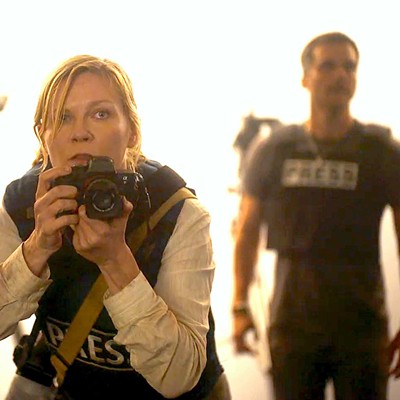Paul Roark is more than just a talented and visionary black and white photographer. He’s somewhat of a photography subversive, seeking to quietly put the artform back into the hands of the people, one slightly hacked black and white printer cartridge at a time.
Roark, whose black and white images are featured at Gallery Los Olivos through Sept. 30, has a keen eye for visual and graphic composition. His work as a landscape photographer draws instant comparisons to the likes of Ansel Adams. But it’s his technical acumen and special insight into the chemistry of photography printing that makes him stand out.
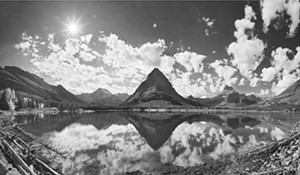
In Roark’s work, artistic composition has a symbiotic relationship with chemical formulas and mathematical calculations.
“Organic shapes are a favorite of mine,” Roark said in a statement on his website. “I like to play with what I believe are built-in pattern recognition algorithms we all have wired into our brains.”
Roark started his relationship with photography in high school, mastering classic printing techniques using silver halide film. But he never planned to pursue it as a profession. Roark instead became an antitrust lawyer, returning to photography after he retired.
“I was determined to divide my career in half,” he said. “I wanted to put food on the table first. I decided I would pursue my photography when I could pursue my passion without regard to financial aspects.”
But Roark didn’t just set out to do photography as a leisurely hobby in his golden years. He wanted to have an impact on the genre, one that would be especially meaningful to those with limited resources looking to explore the artform he is so deeply connected to.
When digital photography became the dominant medium, inkjet cartridges became a photographer’s next most important tool. But the product was never really designed with large-format photography in mind, and as such, photographers struggled to get the critical details in their images that come from darkroom printing.
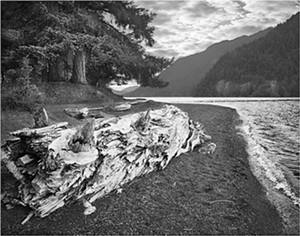
Plus, the cost of inkjet cartridges can become burdensome, as photographers make multiple test prints before coming to a final print. But Roark had a revelation about the printer industry that helped him in his quest.
“The cost of ink is outrageous,” he said. “It’s predominately water. Companies lose money on the printer [by selling them cheaply] but as people use it more and more, the ink costs end up making up for it.”
Roark wanted to find the best carbon pigments to make his prints. He tested numerous diluted solutions until he seized on a formula to make his prints. Today, he details the formulas for his inksets and publishes them on his website, but he doesn’t sell them or make a profit.
“I had the resources,” he explained. “I had the skills to really contribute in the sense of keeping black and white photography printing something that would be available to everybody.”
Roark prints his canvas images on large-format Epson printers, utilizing the inksets he himself made with his own formula. The process involves removing the black ink cartridge and replacing it with a refillable cartridge from a third-party vendor.
Representatives from Epson, wary of third-party vendors circumventing their ink products, even paid Roark a visit at his Solvang home. But Roark downplayed any serious tension, explaining that once they were comfortable he was confining his inksets to the niche world of black and white photography, they were satisfied.
In an additional show in the Guild Room at Gallery Los Olivos, Roark is also showing another set of photographic images, this time printed on white cotton watercolor paper. Roark called the paper, made by Arches, the ultimate product for sustaining image longevity.
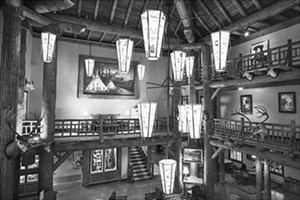
“The limit on the lifespan is going to be the paper,” Roark explained. “With Arches, it’s going to last. Five-hundred years from now this carbon image on Arches is going to look virtually like when it came out of the printer.”
It’s hard to look at Roark’s images and see so many of the interconnected scientific parts that whirl through his own mind. Much of his work represents a sublime dichotomy between abstract and realism. Stark black and white landscapes give way to borderless shapes and seemingly alien organisms, all interconnected in the deep inky carbon of his prints.
Art collectors also found a deep affinity for Roark’s work. When he tried to hang his first image for the show, it ignited a bidding war between two patrons who both wanted it.
But that shouldn’t suggest Roark is interested in the commerce of art.
“My focus is really not on making money at all,” he said. “I want photography to remain accessible to everybody. It was so important in my life. This is the best public service I can do in my second career.”
Arts and Lifestyle Writer Rebecca Rose hopes to never get frozen in carbonite. Contact her at [email protected].


